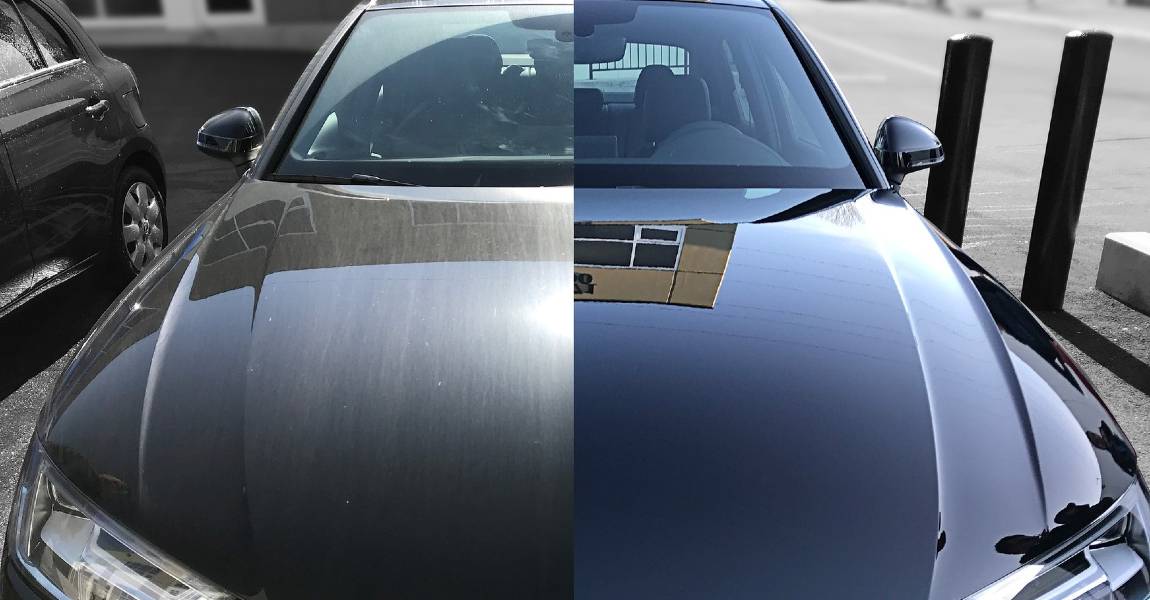Experience affordable ceramic coating Sarasota for a showroom-quality look.
Experience affordable ceramic coating Sarasota for a showroom-quality look.
Blog Article
A Comprehensive Guide to the Kinds Of Ceramic Finish on the marketplace
Ceramic layers have emerged as a crucial service throughout numerous sectors due to their unique residential or commercial properties and applications. From silica-based solutions known for their robustness to hybrid alternatives that combine several advantages, the choices offered can be overwhelming. Comprehending the nuances of each kind, including their particular advantages and excellent use cases, is crucial for making educated decisions. As we explore the distinctive attributes and applications of these finishes, the effects for efficiency and long life become significantly noticeable, raising inquiries regarding which kind might finest fit your requirements.
Comprehending Ceramic Coatings
Ceramic coatings are advanced safety options that have actually gotten appeal in various markets, specifically in vehicle and aerospace applications. These finishes contain a liquid polymer that, when treated, forms a resilient, hydrophobic layer on the surface area of the substrate. This layer offers improved resistance to ecological contaminants, UV radiation, and chemical exposure, consequently expanding the life and visual charm of the underlying material.
The fundamental part of ceramic finishes is silica, which contributes to their hardness and sturdiness. The application process usually includes surface preparation, application of the coating, and healing, which can be attained with warmth or UV light. As soon as healed, ceramic finishes exhibit outstanding bonding homes, allowing them to stick highly to a variety of surfaces, including metals, plastics, and glass.
Along with their safety attributes, ceramic layers additionally offer ease of upkeep. Their hydrophobic nature decreases the adherence of dust and crud, making cleansing simpler and much less regular. Generally, the fostering of ceramic coverings represents a significant improvement in surface area security innovation, offering both practical and visual advantages across multiple fields.
Kinds Of Ceramic Coatings
Different sorts of ceramic coatings are available, each created to fulfill details performance requirements and applications - scratch repair sarasota. One of the most usual types consist of:
Silica-based Coatings: These coverings mostly include silicon dioxide and are recognized for their longevity and chemical resistance. They are widely utilized in automobile and industrial applications.
Titanium Dioxide Coatings: Popular for their photocatalytic properties, titanium dioxide coverings are frequently used in settings where self-cleaning and antifungal residential or commercial properties are preferable, such as in building products and automobile coatings.
Zirconia Coatings: Defined by their high-temperature stability and thermal resistance, zirconia finishings are made use of in applications such as wind turbine engines and high-performance automotive parts.
Alumina Coatings: Exhibiting excellent firmness and thermal security, alumina finishes are often utilized in wear-resistant applications, including reducing tools and industrial machinery. - Auto Detailing
Hybrid Coatings: Integrating the properties of various materials, hybrid coverings provide enhanced efficiency qualities, making them ideal for special and requiring applications.
Each kind of ceramic finishing serves distinct objectives, enabling users to pick the most suitable service based on particular ecological problems and performance needs.
Advantages of Ceramic Coatings
Coatings play a crucial role in boosting the efficiency and long life of surfaces across numerous industries. Ceramic finishings, in specific, offer numerous benefits that make them increasingly prominent amongst manufacturers and customers alike. One of the primary benefits is their exceptional longevity. These coverings are resistant to scratches, chemicals, and UV rays, ensuring that the underlying surface area continues to be safeguarded over time.
Along with sturdiness, ceramic coatings supply exceptional hydrophobic properties, allowing for simple cleaning and maintenance. This water-repellent nature minimizes the adherence of dust, gunk, and other pollutants, which can lengthen the visual appeal and performance of the surface area. Additionally, ceramic finishes can substantially boost thermal resistance, making them excellent for applications that withstand high temperatures.

Application Process
When applying ceramic coverings, a meticulous approach is important to accomplish optimal outcomes. The application procedure commonly starts with complete surface prep work. This entails washing, sanitizing, and polishing the surface to get rid of all impurities, including dust, oil, and prior waxes or sealants. A tidy surface area makes certain correct adhesion of the finish.
Once the surface area is prepped, the next step is to apply the ceramic finish. The finishing should be used in slim layers, as thicker applications can lead to uneven coatings.
After application, the finish requires a certain curing time, usually varying from a couple of hours to a complete day, depending on the item. Complying with these actions vigilantly will make best use of the effectiveness and longevity of the ceramic layer, providing see this page a long lasting safety layer for the surface area.
Upkeep and Longevity
To guarantee the longevity and performance of a ceramic covering, regular maintenance is crucial. Ceramic finishings, recognized for their durability and safety top qualities, need specific treatment regimens to maximize their lifespan and efficiency. The primary step in maintenance includes regular washing with pH-neutral soap, avoiding harsh chemicals that can break down More about the author the finishing. dig this It is recommended to wash the vehicle consistently, ideally every two weeks, to stop the buildup of impurities that could compromise the coating's honesty.
In enhancement to routine cleaning, periodic examinations are important. Look for indications of wear or damages, such as hydrophobic homes reducing or surface blemishes. If essential, a light gloss may be applied to invigorate the finishing without removing it away.
Additionally, the application of a booster spray can improve the layer's hydrophobic results and restore its gloss. This is particularly useful for coatings that have been in use for a prolonged duration. Eventually, by sticking to these upkeep techniques, one can dramatically extend the life of a ceramic coating, guaranteeing that it proceeds to offer optimum protection against ecological factors and preserve the visual appeal of the automobile.
Conclusion

Report this page